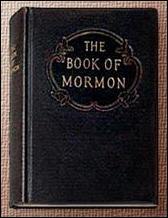
|
Unique Textual Parallels
from the Oberlin Spalding Ms.
and the Book of Mormon
Part 3: (Charts and Tabluations)
Tabulation by Dale R. Broadhurst
From Data Compiled by
Bill A. Williams, jr.
|
As mentioned in Part 1: (Introduction and Lists) of this presentation on "relatively unique" textual parallels, Bill A. Williams, jr. has prepared a Master Index of all the words found in the following works: the books of the KJV Old Testament, the books of the KJV Apocrypha, the books of the KJV New Testament, the Works of Flavius Josephus, Ethan Smith's View of the Hebrews, Solomon Spalding's "Oberlin" Manuscript, and the 1830 edition of the Book of Mormon.
Bill has made several extracts from his Master Index. The extract published in Part 1 lists all "non-biblical" words found in the Book of Mormon and in Part 2: (Textual Parallels) that particular extract was further limited to 37 words found only in the Spalding Ms and the Book of Mormon (from among the seven works listed above). These "relatively unique" words form distinct patterns of occurrence both in Spalding's book and in the Book of Mormon. As can be seen in the Occurrences Chart (below), these unique words appear mostly in the final chapters of the Oberlin Ms and in the four-book span of "records" comprised by the books of Mosiah, Alma, Helaman, and 3 Nephi.
About 40% of these word occurrences in Spalding appear in the final three
chapters of his unfinished work. As can be seen in the Occurrences Chart and in the first set of tabulated data following the chart, Spalding was increasing his use of these unique words as he was developing his story and bringing its plot to a climax. The chart and second set of tabulated data indicate that the count of these same unique words also comes to a high point in the book of Alma. That book alone contains 45 percent of the appearance of these "Spaldingish" words in the Book of Mormon. Even after taking into consideration the relative lengths of the various Book of Mormon segments, the book of Alma stands out from its companion volumes as that portion of the "Nephite Record" which reads most like Spalding's known writings.
The various patterns uncovered by the plotting of these unique word occurrence data correspond roughly to those found in charting the vocabulary, phraseology, and thematic parallels by various other means. Whether the Spalding / Book of Mormon parallels are charted by gross common word count for the two books, distribution of their common words, or distribution of their common word groupings, Alma remains the one Book of Mormon text most like Spalding. It seems rather obvious that anyone wishing to establish the nature and scope of textual parallels in these two works should take a careful look at the end of Spalding's story, comparing its contents closely with the accounts found in Alma.
Sample extracts from the Alma text and Oberlin Ms. text with vocabulary and phraseology cross-references may be accessed in Part 4: (Text Samples) of this presentation.
|